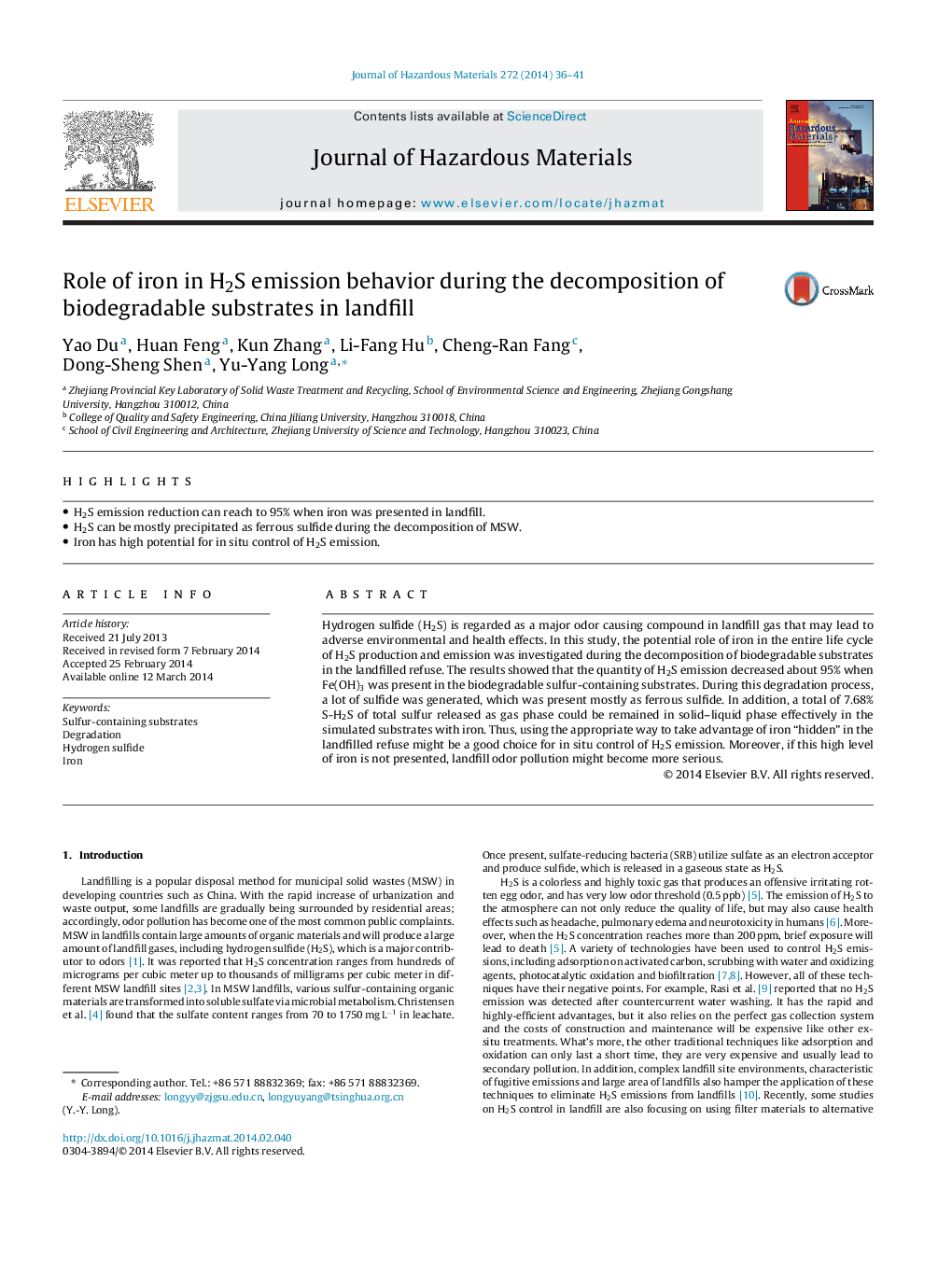| Article ID | Journal | Published Year | Pages | File Type |
|---|---|---|---|---|
| 576796 | Journal of Hazardous Materials | 2014 | 6 Pages |
Abstract
Hydrogen sulfide (H2S) is regarded as a major odor causing compound in landfill gas that may lead to adverse environmental and health effects. In this study, the potential role of iron in the entire life cycle of H2S production and emission was investigated during the decomposition of biodegradable substrates in the landfilled refuse. The results showed that the quantity of H2S emission decreased about 95% when Fe(OH)3 was present in the biodegradable sulfur-containing substrates. During this degradation process, a lot of sulfide was generated, which was present mostly as ferrous sulfide. In addition, a total of 7.68% S-H2S of total sulfur released as gas phase could be remained in solid-liquid phase effectively in the simulated substrates with iron. Thus, using the appropriate way to take advantage of iron “hidden” in the landfilled refuse might be a good choice for in situ control of H2S emission. Moreover, if this high level of iron is not presented, landfill odor pollution might become more serious.
Keywords
Related Topics
Physical Sciences and Engineering
Chemical Engineering
Chemical Health and Safety
Authors
Yao Du, Huan Feng, Kun Zhang, Li-Fang Hu, Cheng-Ran Fang, Dong-Sheng Shen, Yu-Yang Long,
